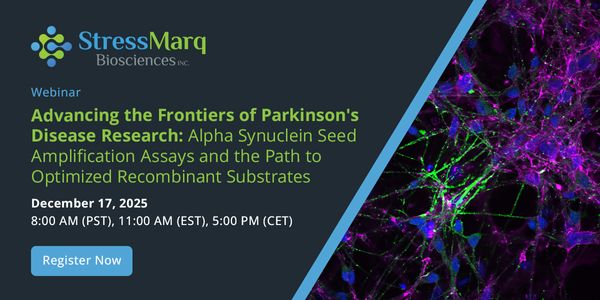Spatial Mapping of Pain-Associated G-Protein Coupled Receptors and Biomarker Localization in Mouse Brain Using RNAscope HiPlex v2 and RNA-Protein Co-Detection Assay with Live Q&A
-
Sayantani Basak, PhD
Applications Scientist, Advanced Cell Diagnostics, Bio-TechneBIOGRAPHY
Spatial analysis of gene expression is an essential tool for comprehensive studies of complex, highly heterogeneous tissues, such as the brain, tumors, and developing organs. RNAscope HiPlex v2 assay is an advanced, in situ hybridization (ISH) tool to understand vital gene expression patterns at single cell resolution in highly complex tissues. The assay generates precise gene expression data, enabling comprehensive spatial studies from 12 targets in FFPE samples and up to 48 targets in Fresh and Fixed Frozen sample types.
The G-protein coupled receptors (GPCR) are an important component of pain modulation and are one of the most important therapeutic targets in pain medicine. However, detection of GPCRs can be challenging due to difficulties in obtaining suitable antigen accessibility and their low expression levels. In this webinar, using the highly sensitive HiPlex v2 assay with the upcoming RNAscope HiPlex v2 Whole Slide image registration software, we will demonstrate spatial mapping of G-protein coupled receptors (GPCR) within the normal mouse brain at single cell resolution. We further demonstrate detection of GPCRs and Neuropeptide Y (NYP), known to be involved in pain perception and transmission in the brain, using the integrated RNA-protein codetection workflow.
The study provides deeper insights into understanding the spatial crosstalk as well as functional significance of different cell populations within the various brain regions thereby leading to broader understanding of disease pathology.
Learning Objectives:
1. Discuss the latest development in the HiPlex v2 assay including image registration software for WSI registration and downstream image analysis.
2. Explain spatial gene expression mapping for visualizing GPCR family receptor, within the normal mouse brain at single cell resolution.
3. Identify cell type specific gene expression of opioid receptors in different regions of the brain to predict functional significance of different cell types in the pain pathway.
Please update your information
Certificate of Participation
DOWNLOAD CERTIFICATE






